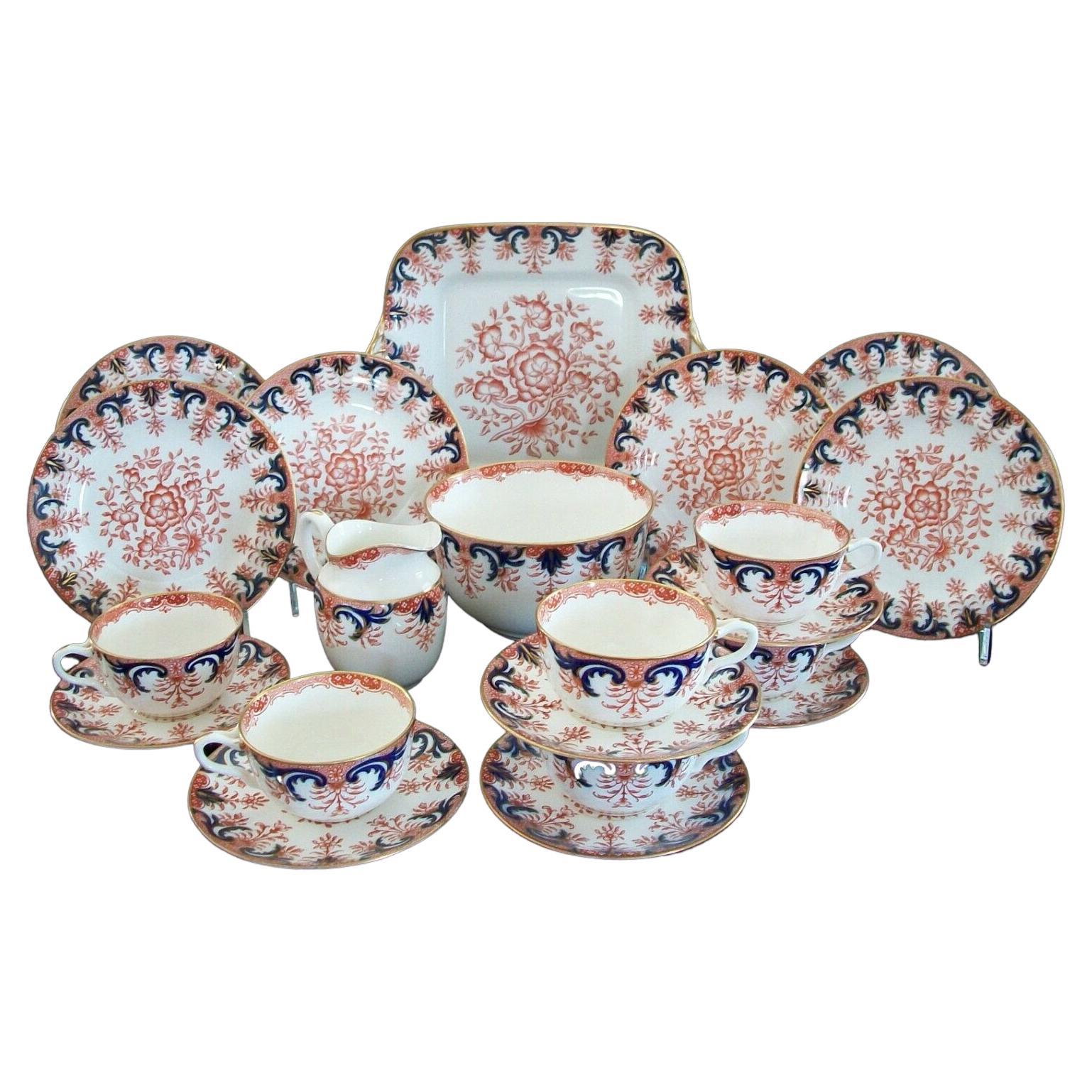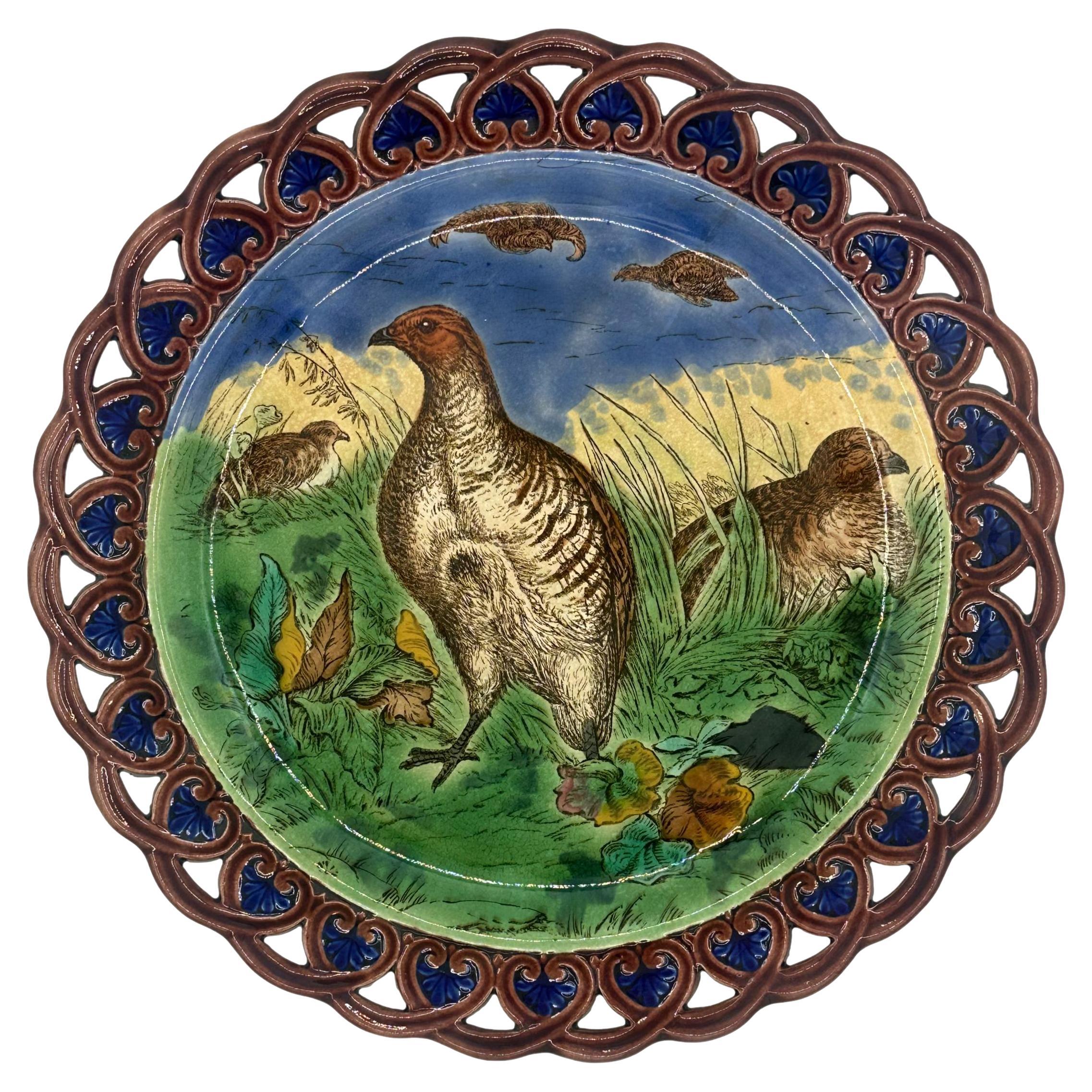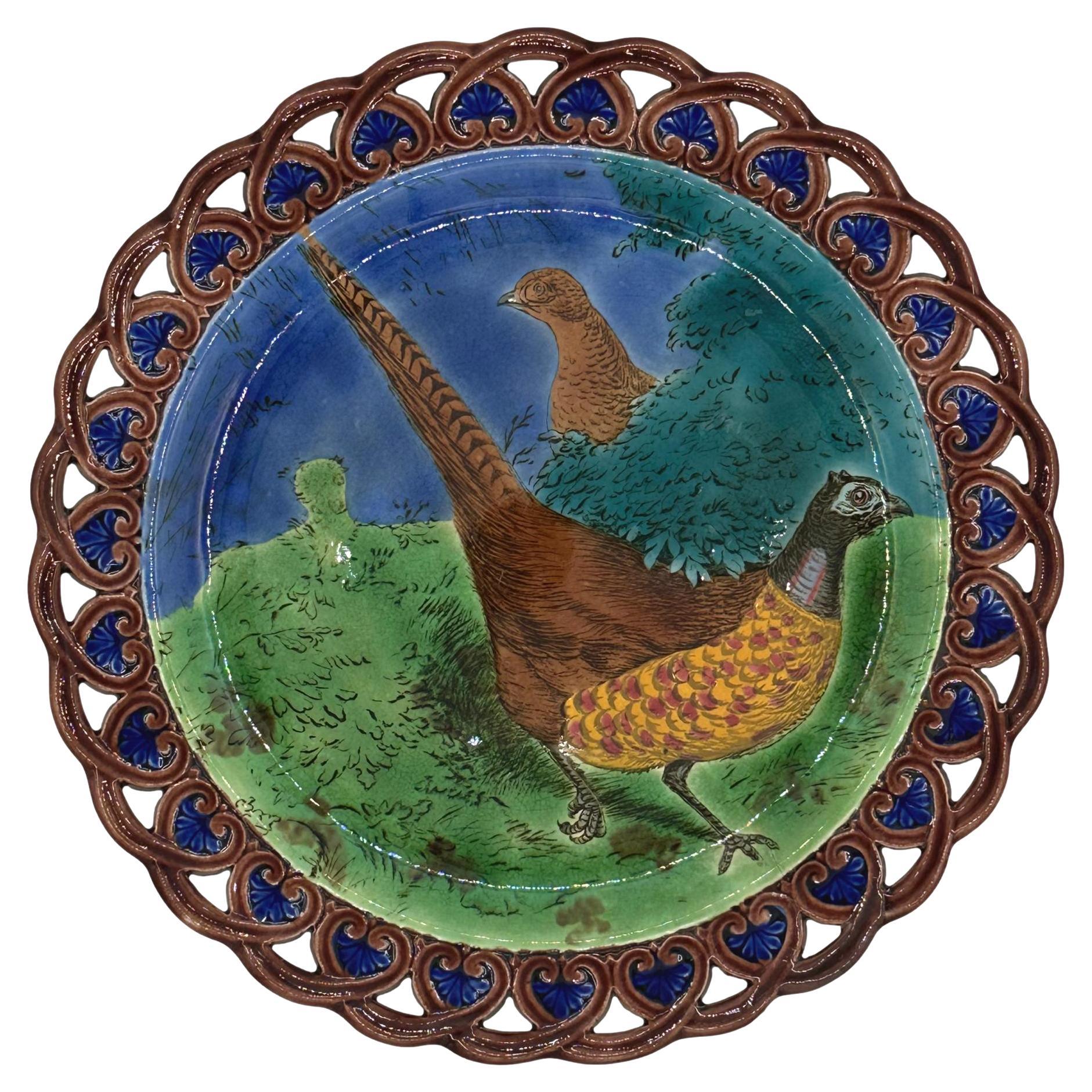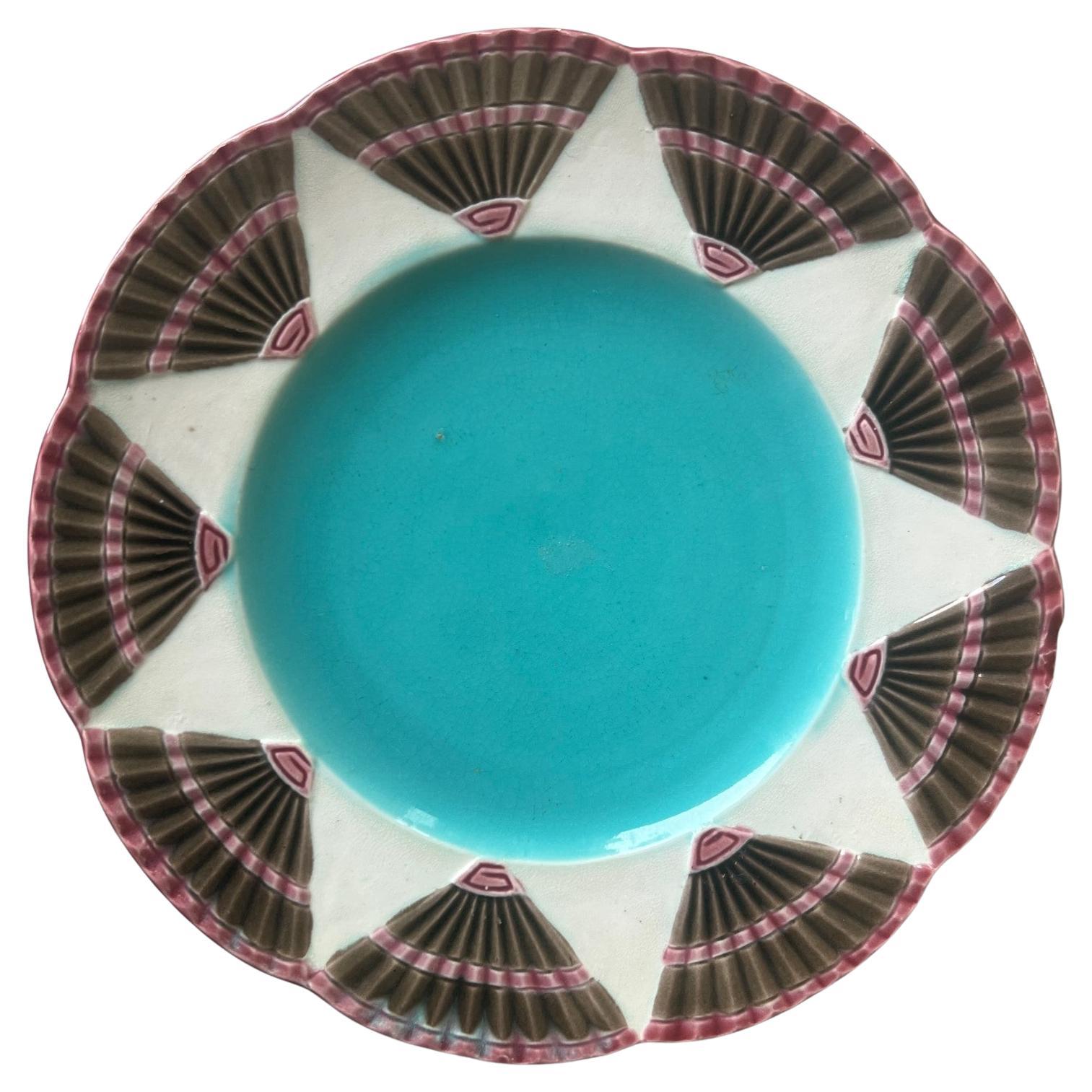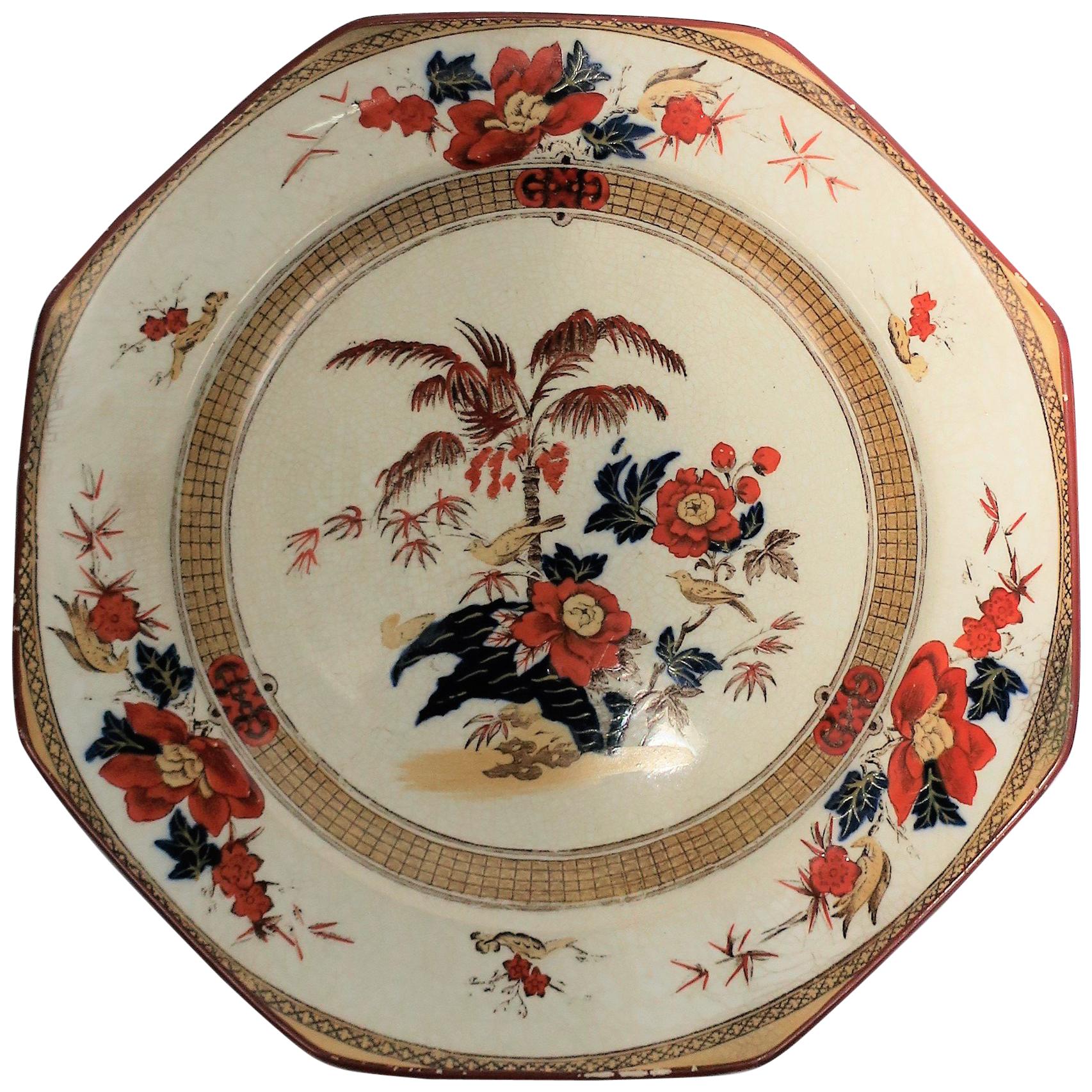Wedgwood 10 English Dessert Plates Design "Burleigh" Blue Transferware Decor
About the Item
- Creator:Wedgwood (Maker)
- Dimensions:Height: 0.79 in (2 cm)Diameter: 7.09 in (18 cm)
- Sold As:Set of 10
- Style:Victorian (In the Style Of)
- Materials and Techniques:Ceramic,Glazed
- Place of Origin:
- Period:
- Date of Manufacture:1914-1915
- Condition:Wear consistent with age and use. All plates are in good condition. Time and use have created a craquelé effect on some plates that makes the item even more charming and alluring.
- Seller Location:Prato, IT
- Reference Number:
Wedgwood
Arguably the most celebrated of all English ceramics makers, Wedgwood was founded in 1759 by Staffordshire potter Josiah Wedgwood (1730–95). The company is famed for its Jasperware — molded Neoclassical stoneware vases, plates and other pieces, inspired by ancient cameo glass, featuring white figures, scenes and decorative elements set in relief on a matte colored background. The best-known background hue is light blue, but Wedgwood’s iconic silhouettes also appear on green, lilac, yellow, black and even white grounds. Some pieces use three or more colors.
The Wedgwood firm first came to prominence for its tableware, which quickly gained favor in aristocratic households throughout Britain and Europe. In 1765, Wedgwood was commissioned to create a cream-colored earthenware service for Queen Charlotte, consort of King George III. The queen was so thrilled with her new china that Wedgwood was given permission to call himself “Potter to Her Majesty,” and the decorative style became known as Queen’s Ware. Not to be outdone, Catherine the Great of Russia commissioned her own set of Wedgwood china in 1773. Nearly 200 years later, the firm created a 1,200-piece service for the coronation of Queen Elizabeth II. In recent years, leading designers including Jasper Conran and Vera Wang have collaborated with Wedgwood — in the tradition of such distinguished 18th century artists such as the painter George Stubbs and metalsmith Matthew Boulton.
From plates and other dinnerware to decorative items like urns, cachepots and candlesticks, Wedgwood designs lend a traditional air to Anglophile interiors. And even if you have to make your own tea, you may find it comforting to sip it from a delicate cup that was manufactured in the same Stoke-on-Trent kiln that produced Her Majesty’s tea service. Be sure to keep your pinky raised.
- ShippingRetrieving quote...Ships From: PRATO, Italy
- Return PolicyA return for this item may be initiated within 14 days of delivery.
- Staffordshire Potteries English Tray with Blue Transferware DecorationsBy Clementson BrothersLocated in Prato, TuscanyWe kindly suggest you read the whole description, because with it we try to give you detailed technical and historical information to guarantee the authenticity of our objects. Lovely and refined English oval ceramic tray; elegant and rich blue decorations have been executed on the white background using the transferware method; the mark on the back tells us exactly that the object was produced by the Clementson Brothers LTD Company between 1901 and 1913 at the Phoenix factory in Shelton, the company made a wide range of objects with this decoration called "Delf" ( see mark no.909 p.150 of "Encyclopaedia of British Pottery and Porcelain Mark"). Transferware, which was very fashionable in the Victorian period, refers to glazed and decorated pottery with a specific treatment that they produced in Staffordshire, England; they used copper plates on which the design was engraved, the plate was then inked and the design transferred to a special fabric that was later placed on the pottery (plates, trays, tureens, etc.) which was glazed and fired; the first to use this printing process were John Sadler and Guy Green of Liverpool in 1756. If we look at the pottery made by this method we will notice that the designs are not perfect and often the ink is smudged: this is their characteristic. A hand-painted plate service could afford few English families, with this method even middle-class families could have a decorated plate service. The Clementson Firm was founded in 1839 by Joseph Clementson, who retired from the business in 1867, leaving the factory to his four sons and son...Category
Early 20th Century British Victorian Ceramics
MaterialsCeramic
- Copeland-Spode English Tray with Blue Transferware DecorationsBy Copeland SpodeLocated in Prato, TuscanyWe kindly suggest you read the whole description, because with it we try to give you detailed technical and historical information to guarantee the authenticity of our objects. Elegant and refined English octagonal ceramic tray; on the white background, soft and rich blue decorations have been executed using the transferware method; in the center we find the poetic and graceful representation of the Severn River and the town of Bridgnorth (the name of this decoration is "Severn"), while the edges of the tray are adorned with sumptuous and spectacular flower and leaf decorations. The Severn River is the longest river in the United Kingdom (350 km), rising in Wales and flowing into the Bristol Channel; Bridgnorth is an ancient Saxon settlement; observing the view of the river and town from his castle at Bridgnorth King Charles I Stuart (1600-1649) said "the most beautiful sight in all my kingdom". On the back of the tray there are 3 imprinted marks including one with final number 14, then we find in the center a blue mark, these indicate to us exactly that the tray was produced in Stoke-on-Trent by the Copeland-Spode company in 1914 (see mark no.1079 p.172 of "Encyclopaedia of British Pottery and Porcelain Mark). The Spode firm was founded in the heart of the Potteries - Stoke-on-Trent by Josiah Spode in 1770. Josiah Spode is most famous for developing the specific design technique that meant underglaze transfers could be printed on earthenware. Later, focusing on porcelain production, Josiah Spode pioneered the development of a new form of porcelain, originally called "Stoke China...Category
Early 20th Century British Victorian Ceramics
MaterialsCeramic
- Victorian Style Set 4 English Plates Transferware Decorations Royal Arms MarkLocated in Prato, TuscanyWe kindly suggest you read the whole description, as with it we try to give you detailed technical and historical information to guarantee the authenticity of our items. Refined and ...Category
Antique Mid-19th Century British Victorian Ceramics
MaterialsCeramic
- Deruta Italy Set 5 Ceramic Plates with Cobalt Blue DecorationsLocated in Prato, TuscanyWe kindly suggest you read the whole description, because with it we try to give you detailed technical and historical information to guarantee the authenticity of our objects. Set of five charming ceramic plates with rich cobalt blue decorations on a white background; three plates have a diameter of cm.30 and are the two with both painted on the bottom a little bird surrounded by flowers and vine shoots but with different border decorations, the other is the one with a star painted in the center and a flowery border; the other two have a diameter of cm.33 and have a pomegranate design in the center surrounded by vine shoots, both again with different borders. They were all painted exclusively by hand and faithfully reproduce ancient Umbrian decorations from the 1700s; made between 1950 and 1954 in a small artisan workshop in Deruta (Perugia-Italy). The ceramic mixture is coarse (see photos of the back of the plates) characteristic of Deruta ceramics...Category
Mid-20th Century Italian Neoclassical Revival Ceramics
MaterialsCeramic
- Deruta Italian Ceramic Set Three Hand Painted Wall PlatesBy DerutaLocated in Prato, TuscanyWe kindly suggest you read the whole description, because with it we try to give you detailed technical and historical information to guarantee the authenticity of our objects. Three delightful and colorful round ceramic wall plates; they were created completely by hand between 1965 and 1968 by a small artisan workshop in Deruta (Perugia, Italy) respecting ancient traditions and raw materials; clay, enamel, colors, water, fire and the hands of the artist: these are the simple elements that lead to the creation of a ceramic article; on the back they have two holes so they can be hung on the wall; they represent characters in Renaissance clothing, each in a different pose: the first is a swordsman who wields a special weapon of the time the "side sword" with S-shaped guard and a dagger with guard very elaborate, useful to trap the blade of the opponent; the "spada da lato" (side sword) is that elegant and handy sword that, from the second half of the fifteenth century and throughout the sixteenth century, is worn on the belt by nobles or rich, a weapon designed for self-defense or to be used in a duel; In fact the second plate represents just a duel in which the two contenders always use "swords side", the one on the left also has a small shield and the one on the right wields an effective and perfidiously fast double-edged dagger; In the third plate is painted a "naccarino" who plays a cylindrical drum (similar to those spread by the Lanzichenecchi from the fifteenth-sixteenth century) held on the side and beaten with two sticks, the "naccarini" were players of small instruments whose presence was required every time you had to give particular solemnity to a public event. We don't know why the people of Deruta began to work the terracotta and to produce vases and manufactured articles in ceramics but we know with all certainty that already in the Middle Ages the city was known for the production of ceramics of high quality, the first written sources make to date the ceramics of Deruta (Perugia) to 1282. In the Renaissance, they were active to Deruta more than fifty furnaces with which they collaborated artists like the Perugino, the Pinturicchio, and Luca Signorelli. The mastery of the artisans and artists of Deruta ceramics...Category
Mid-20th Century Italian Medieval Ceramics
MaterialsCeramic
- Ridgway Pair Noma Pattern Table Plates 4317 Chinoserie StyleBy Ridgway PorcelainLocated in Prato, TuscanyWe kindly suggest that you read the entire description, as with it we try to give you detailed technical and historical information to ensure the authenticity of our items Exceptiona...Category
Antique Mid-19th Century British Chinoiserie Ceramics
MaterialsCeramic
- Wedgwood, Rare Antique Transferware & Flow Blue Luncheon Set, U.K., C.1900By WedgwoodLocated in Chatham, ONWedgwood - exceptional and rare antique brick red transferware and flow blue luncheon set for six - hand painted gilded borders and details - consisti...Category
Early 20th Century British Victorian Tableware
MaterialsCeramic
- A Wedgwood Majolica Quails Game Cabinet Plate, Reticulated, English, 1877By WedgwoodLocated in Banner Elk, NCA Wedgwood Majolica Game Cabinet Plate, English, 1877, Designed for Wedgwood by General Henry Hope Crealock (British 1831--1891), the central scene dep...Category
Antique 19th Century English Victorian Ceramics
MaterialsMajolica
- A Wedgwood Majolica Pheasants Game Cabinet Plate, Reticulated, English, 1877By WedgwoodLocated in Banner Elk, NCA Wedgwood Majolica Pheasants Game Cabinet Plate, English, 1877, Designed for Wedgwood by General Henry Hope Crealock (British 1831--1891), the central...Category
Antique 19th Century English Victorian Ceramics
MaterialsMajolica
- Antique English Fan Pattern Plate by WedgwoodBy WedgwoodLocated in Ross, CA19th Century plate made in England by Wedgwood, the pattern, part of the Fan collection is called Argenta Chicago. It has a turquoise center surrounded by a star pattern and fans. ...Category
Antique Late 19th Century English Anglo-Japanese Ceramics
MaterialsCeramic
- Antique English Fan Pattern Plate by WedgwoodBy WedgwoodLocated in Ross, CA19th Century plate made in England by Wedgwood, the pattern, part of the Fan collection is called Argenta Chicago. It has a turquoise center surrounded by a star pattern and fans. ...Category
Antique Late 19th Century English Anglo-Japanese Ceramics
MaterialsCeramic
- Antique English Octagonal Plate with Bird and Palm Tree Design by WedgwoodBy WedgwoodLocated in New York, NYA beautiful English octagonal decorated pate by Wedgwood, early -20th century, England. Plate has a modern octagonal shape, decorated with birds, flowers, and a beautiful palm tree a...Category
Early 20th Century English Decorative Art
MaterialsPorcelain
